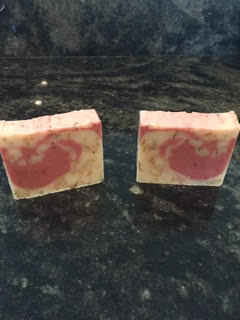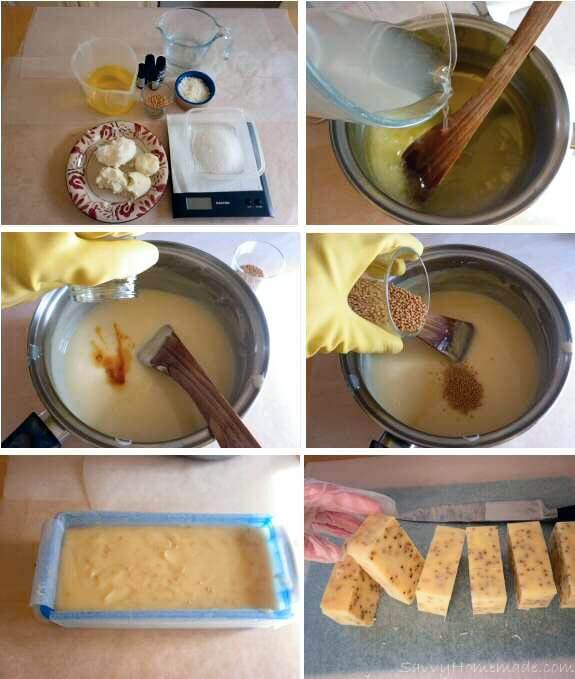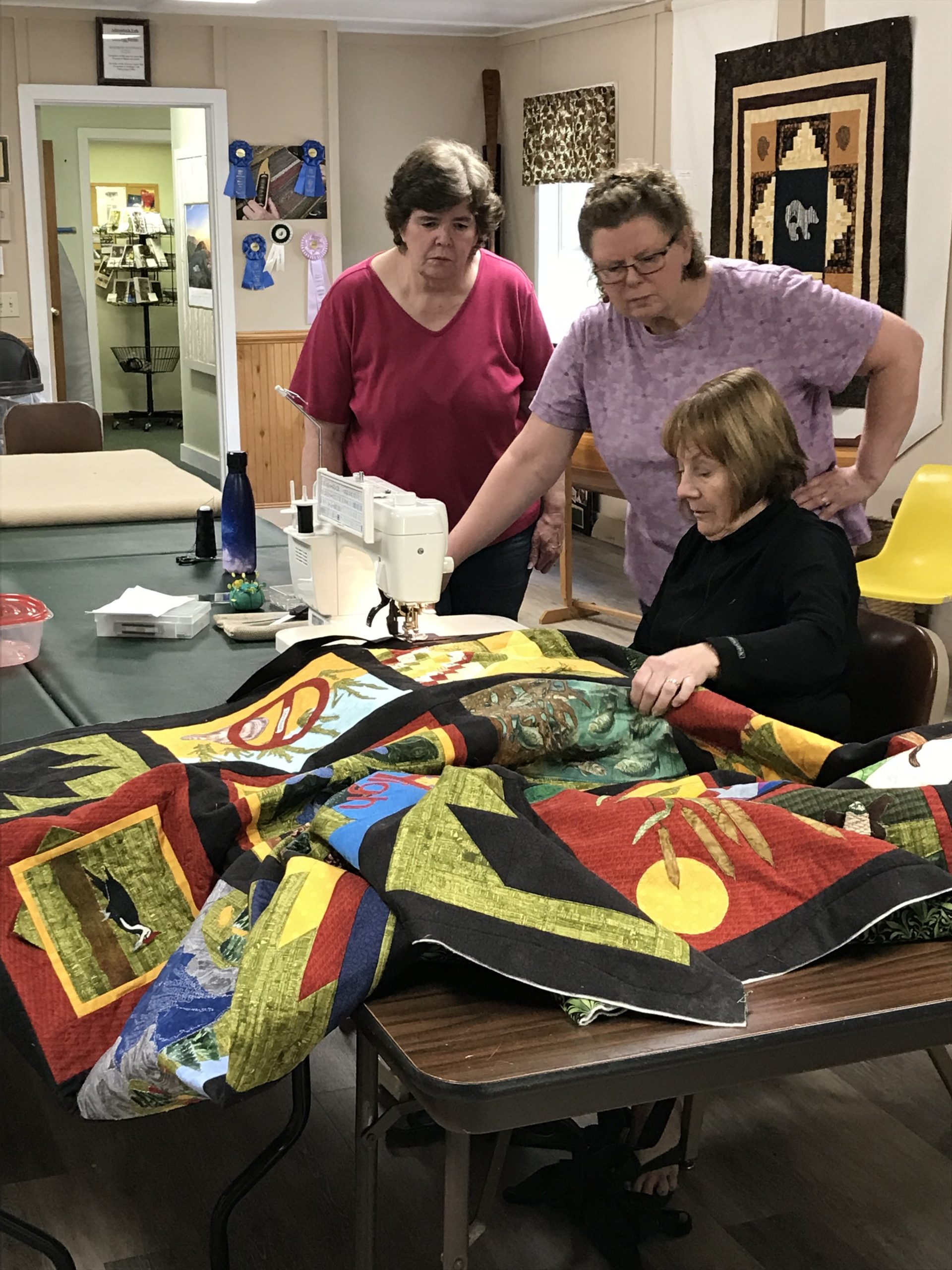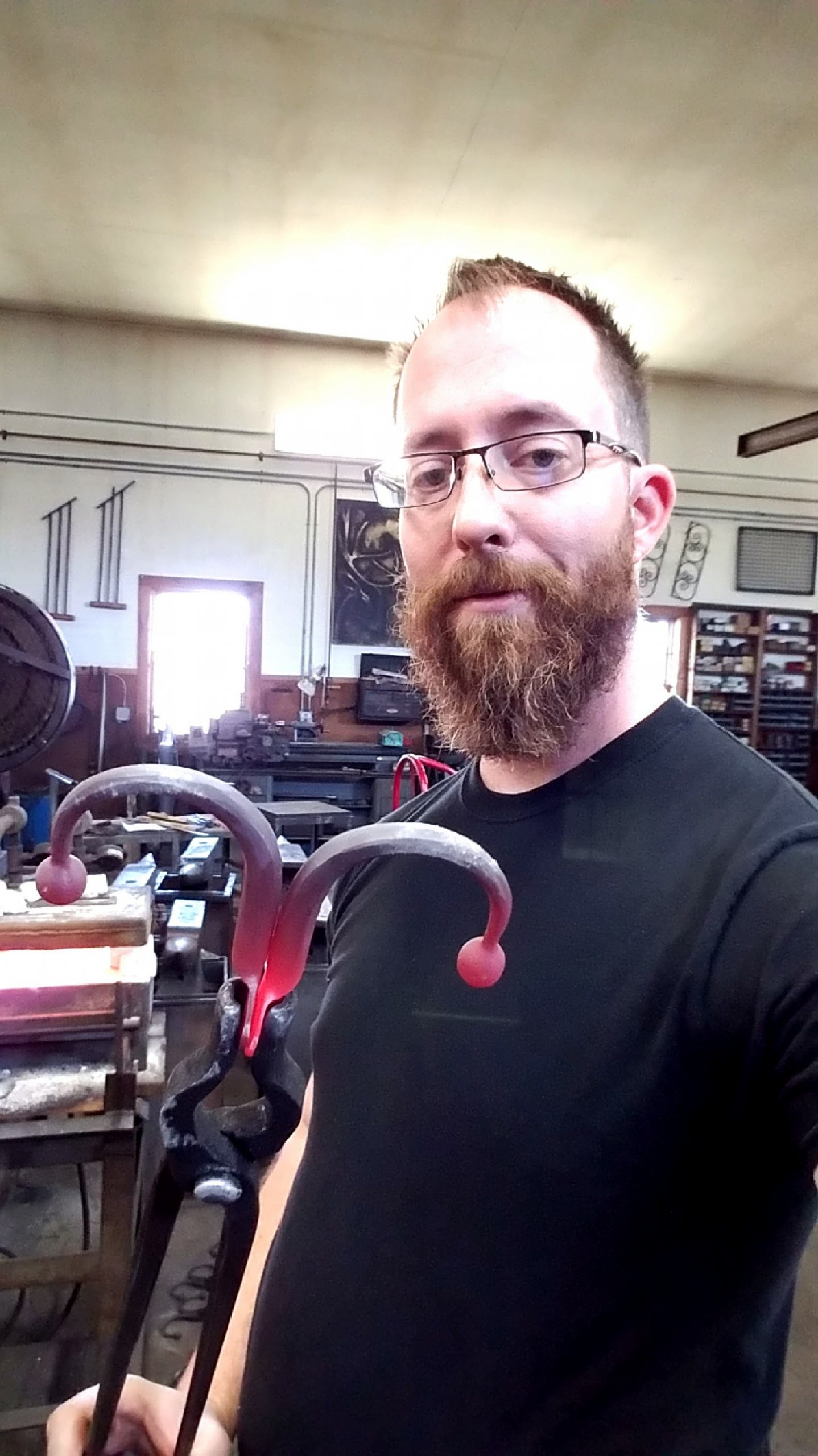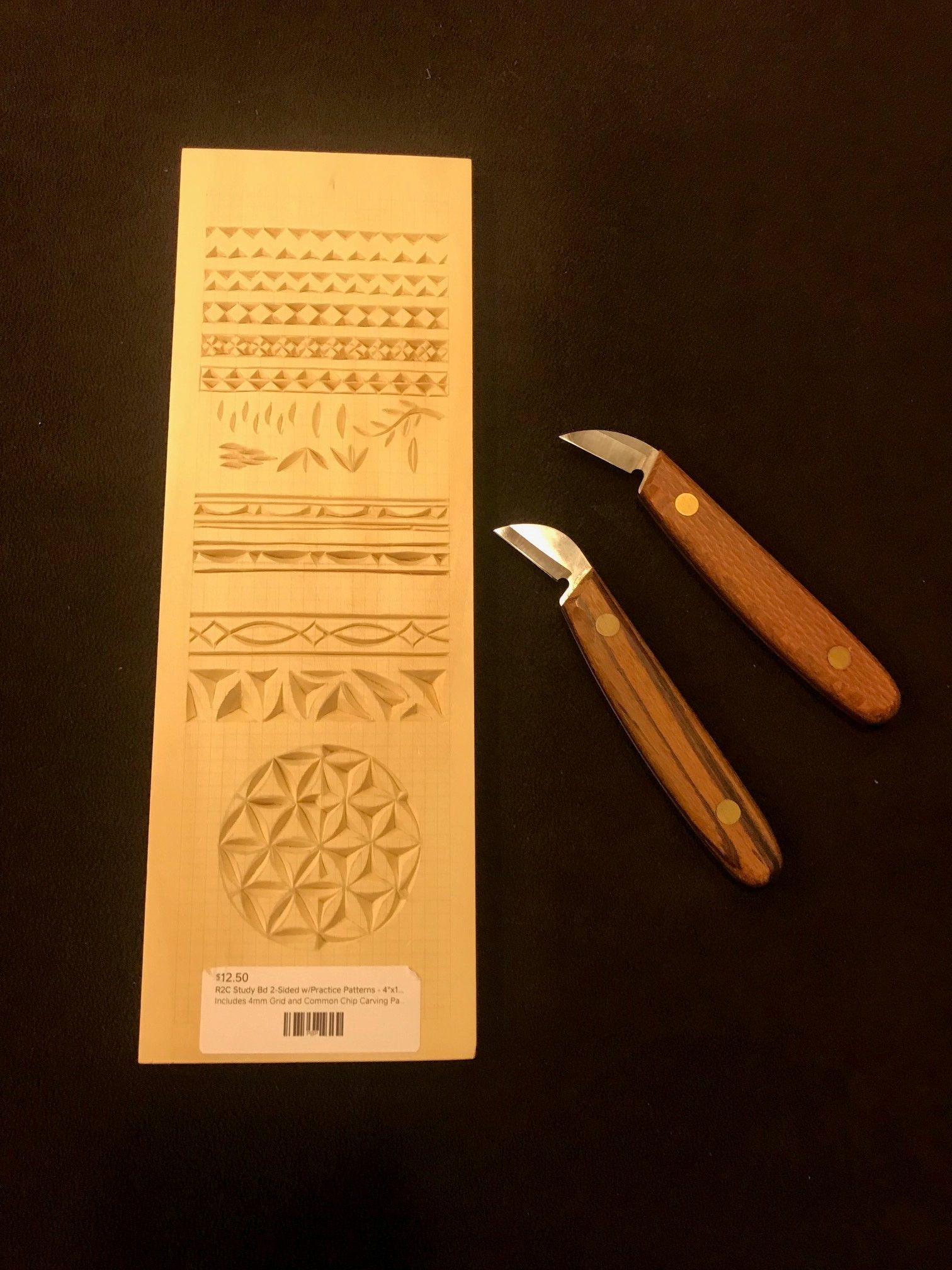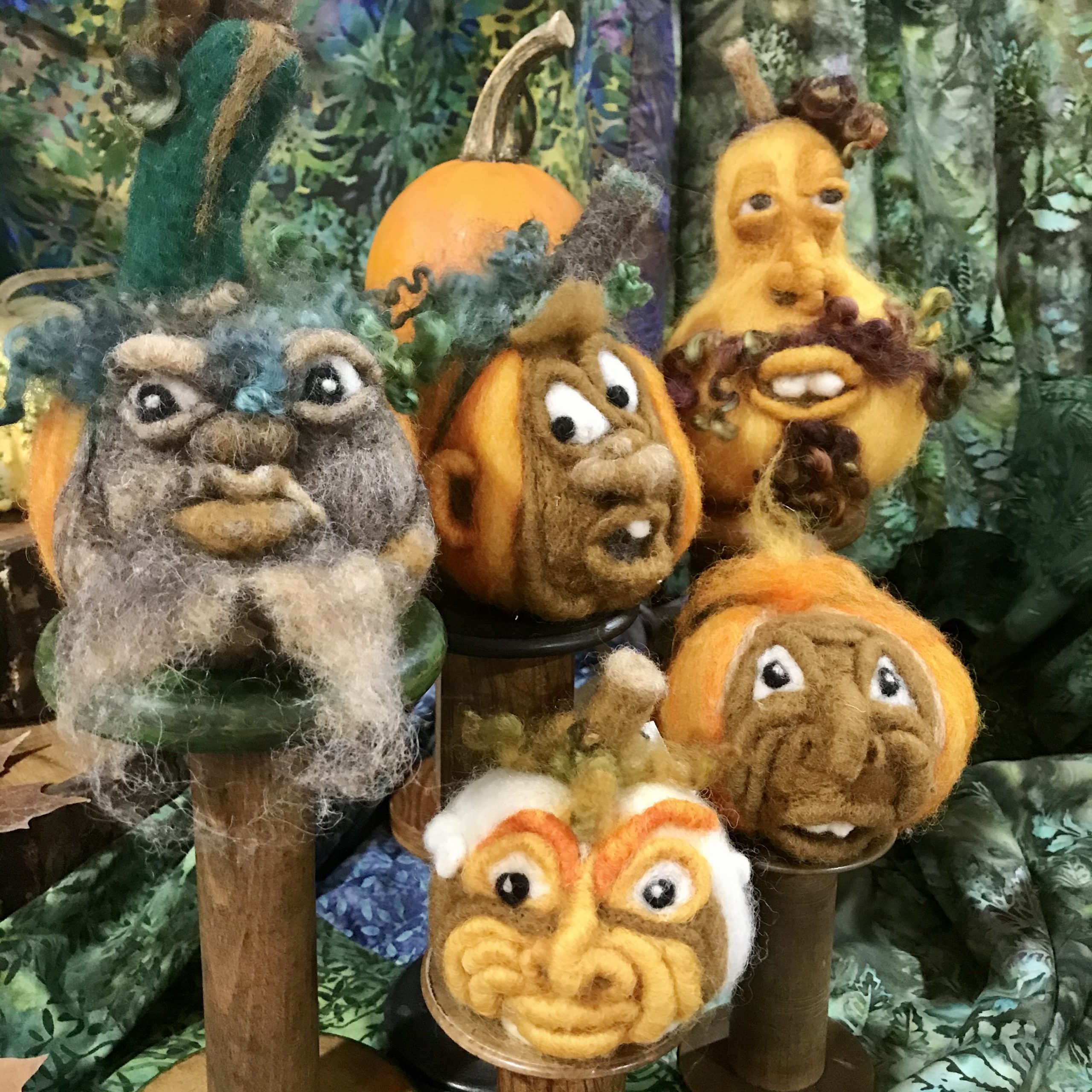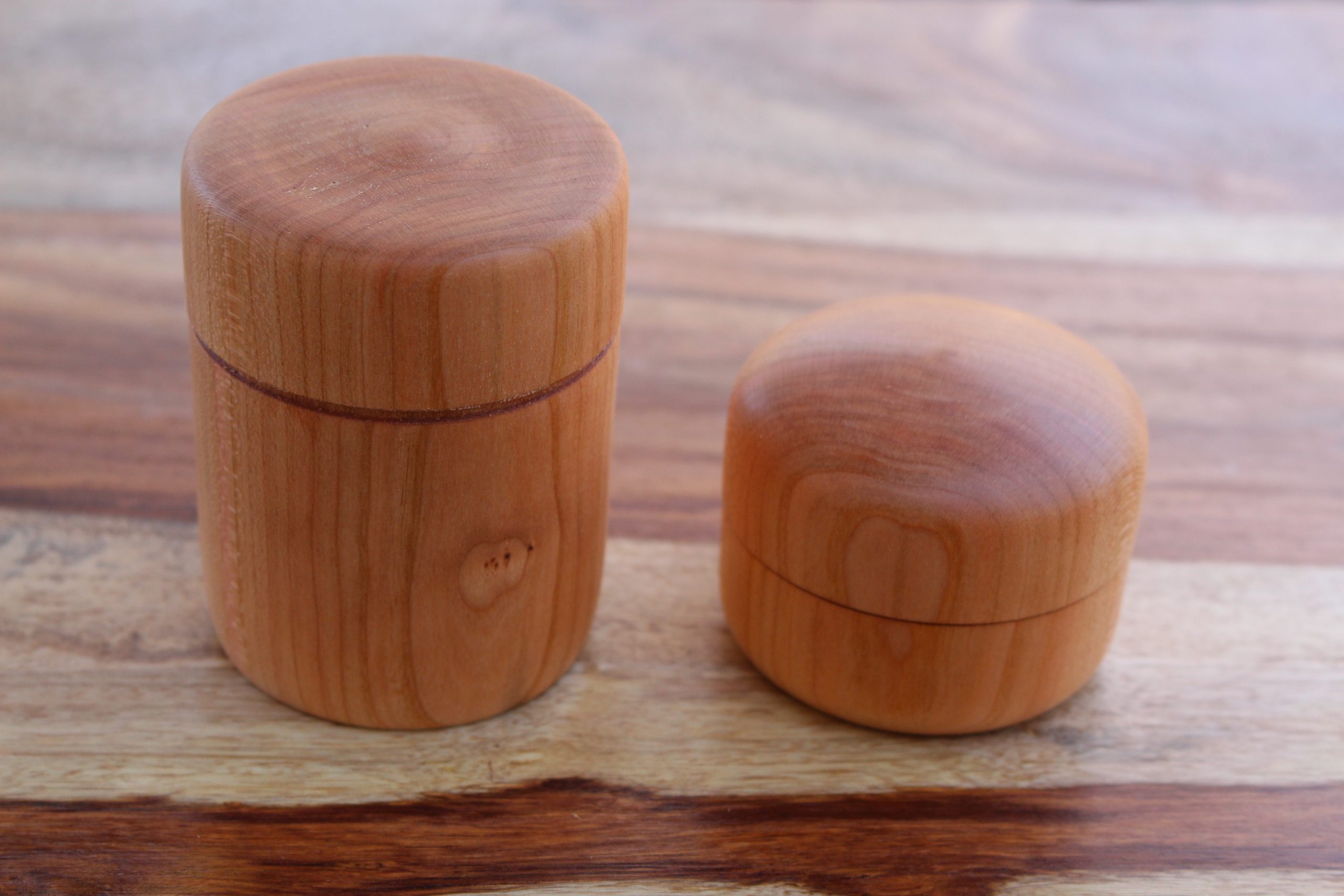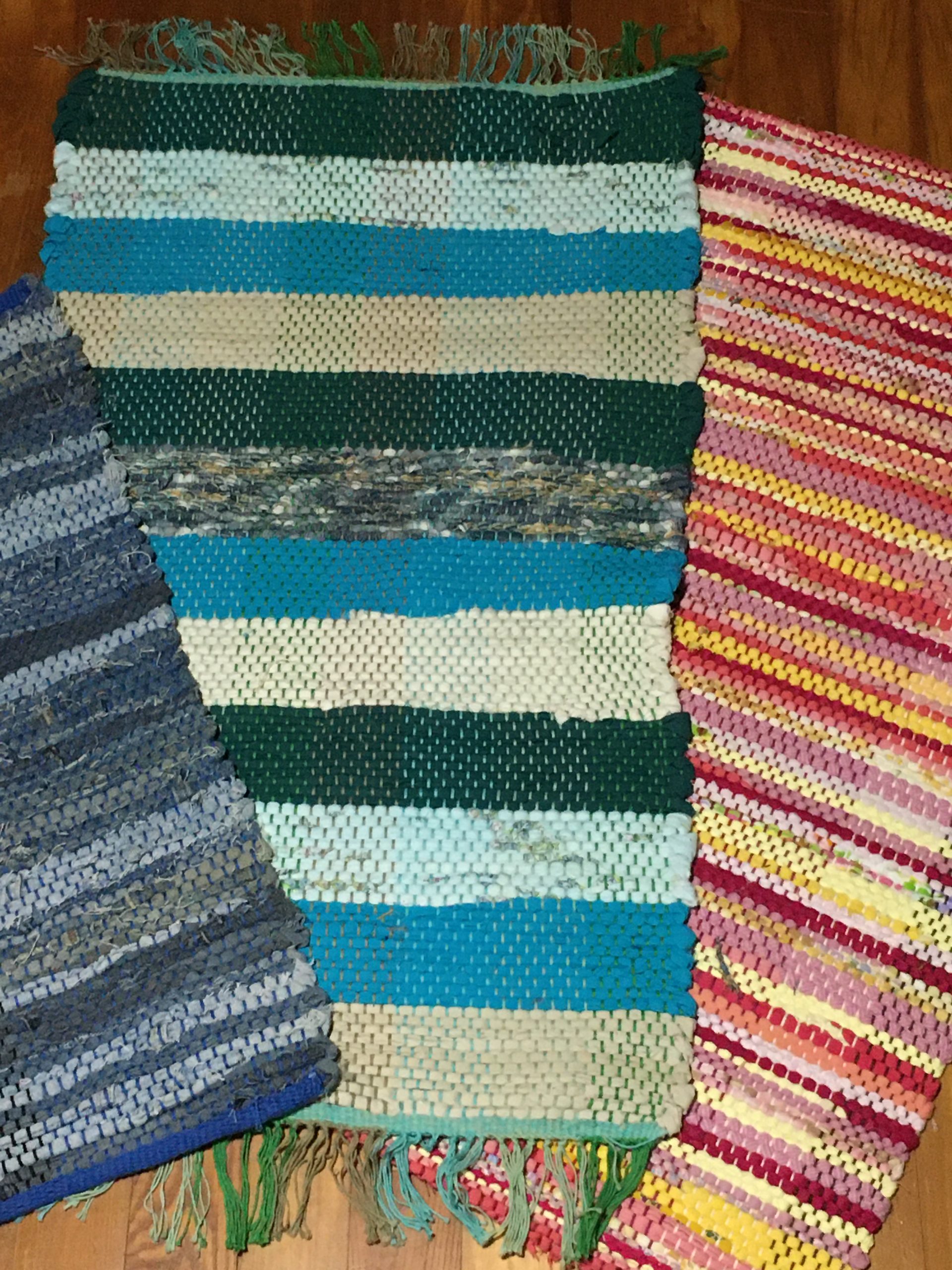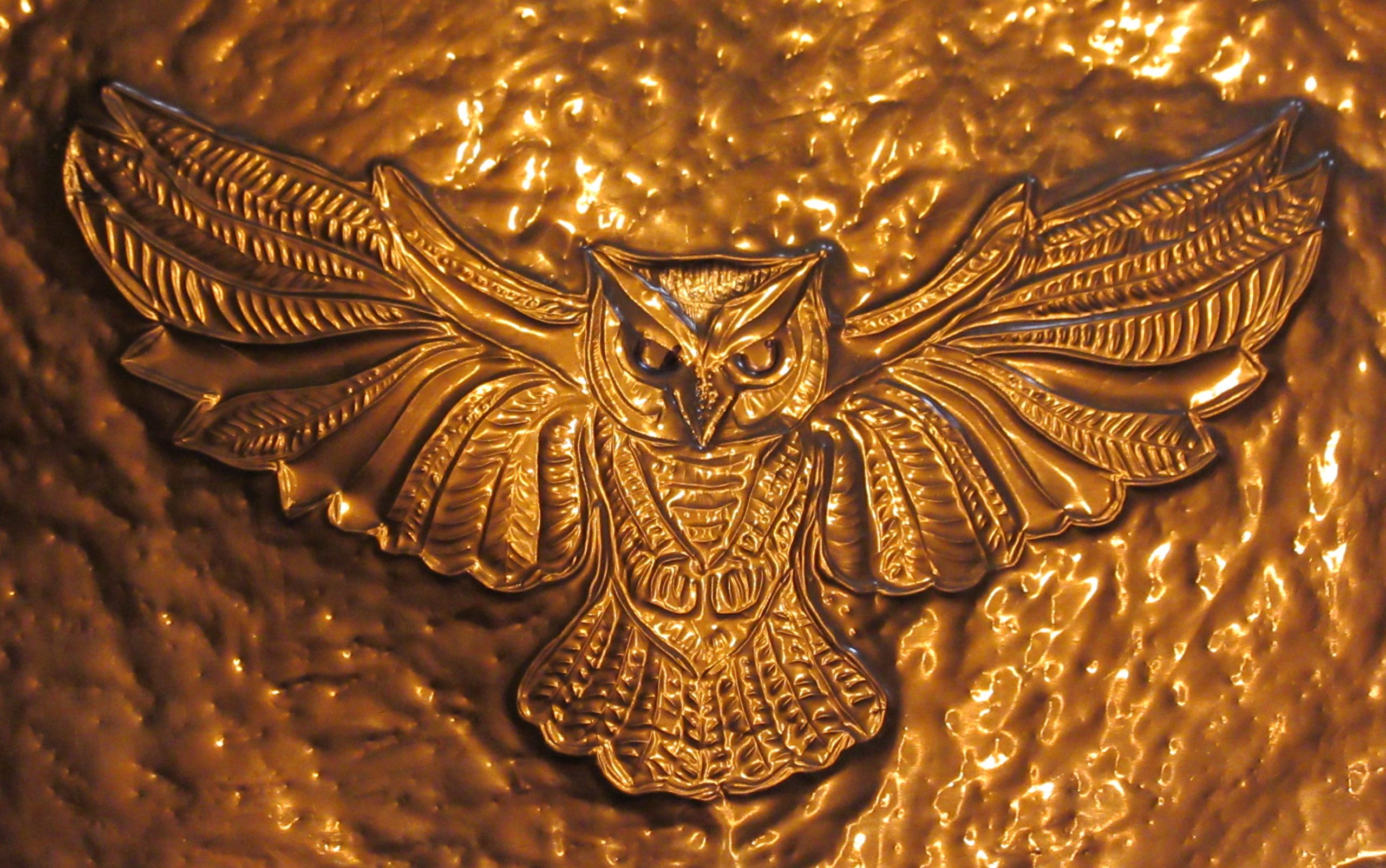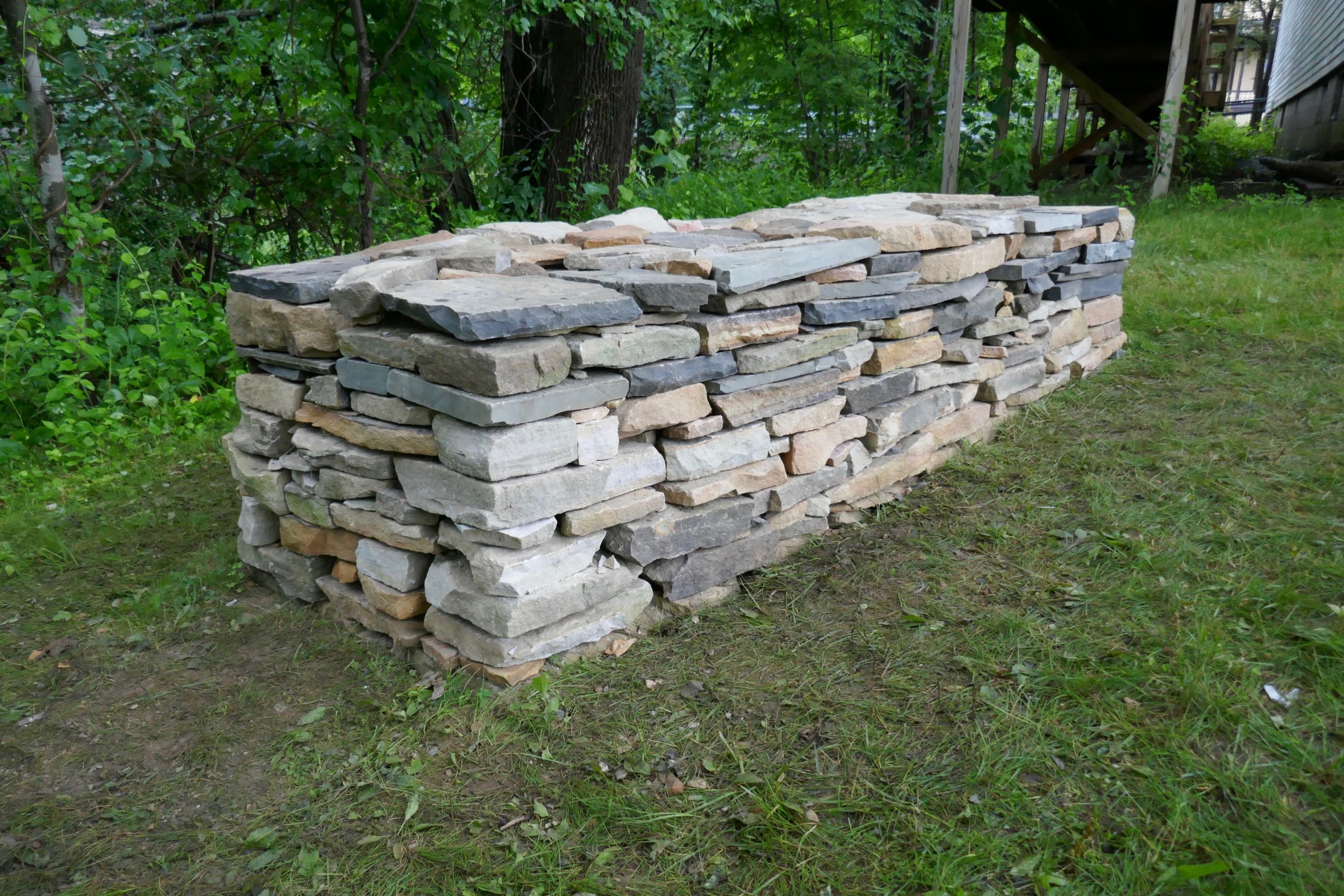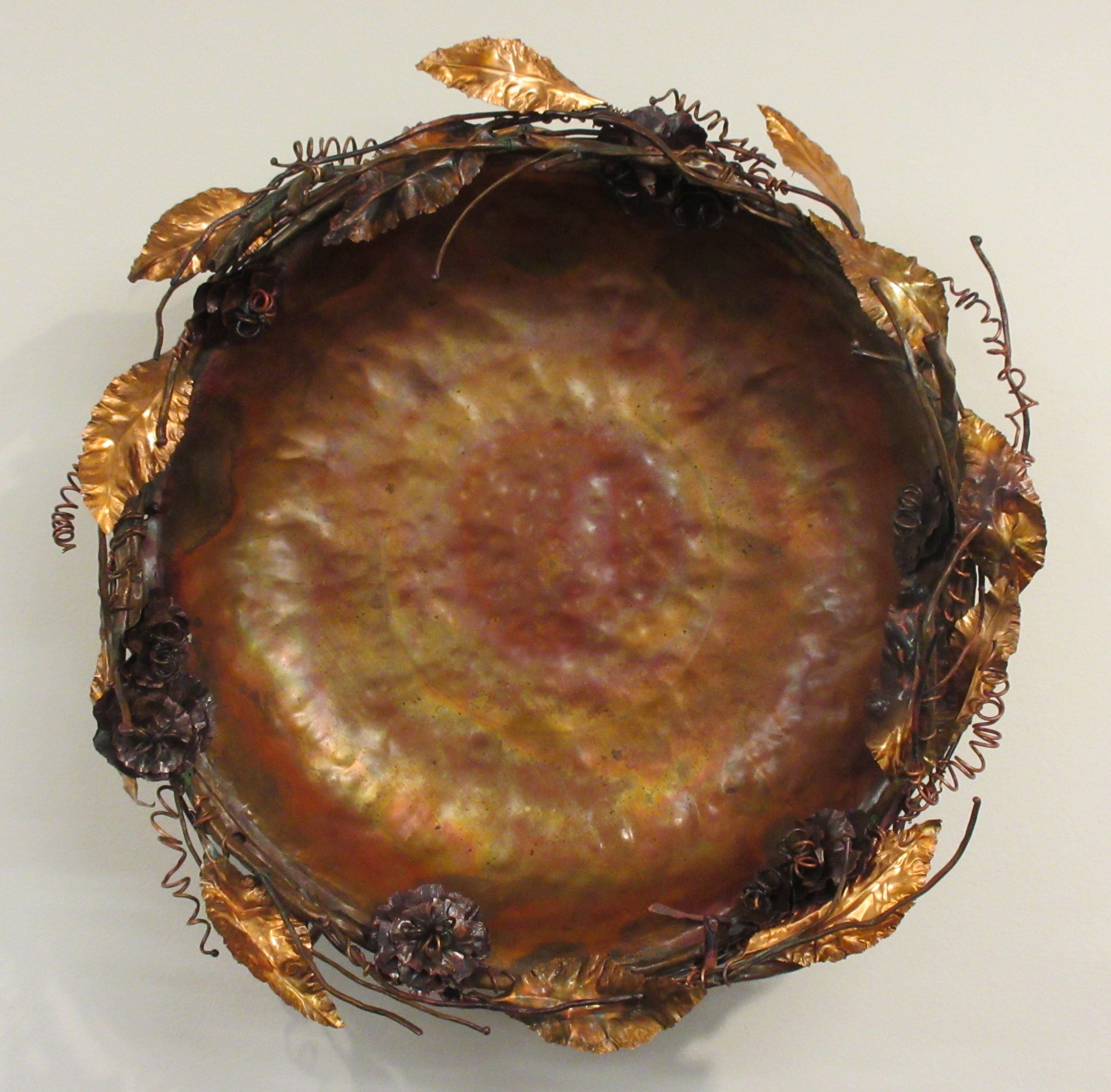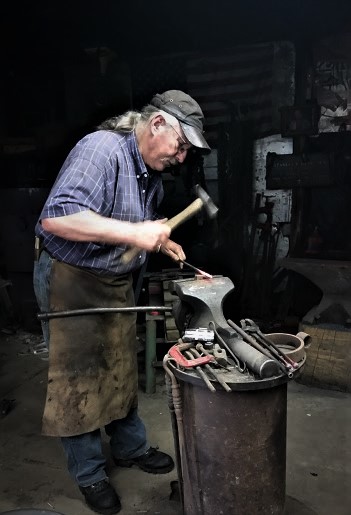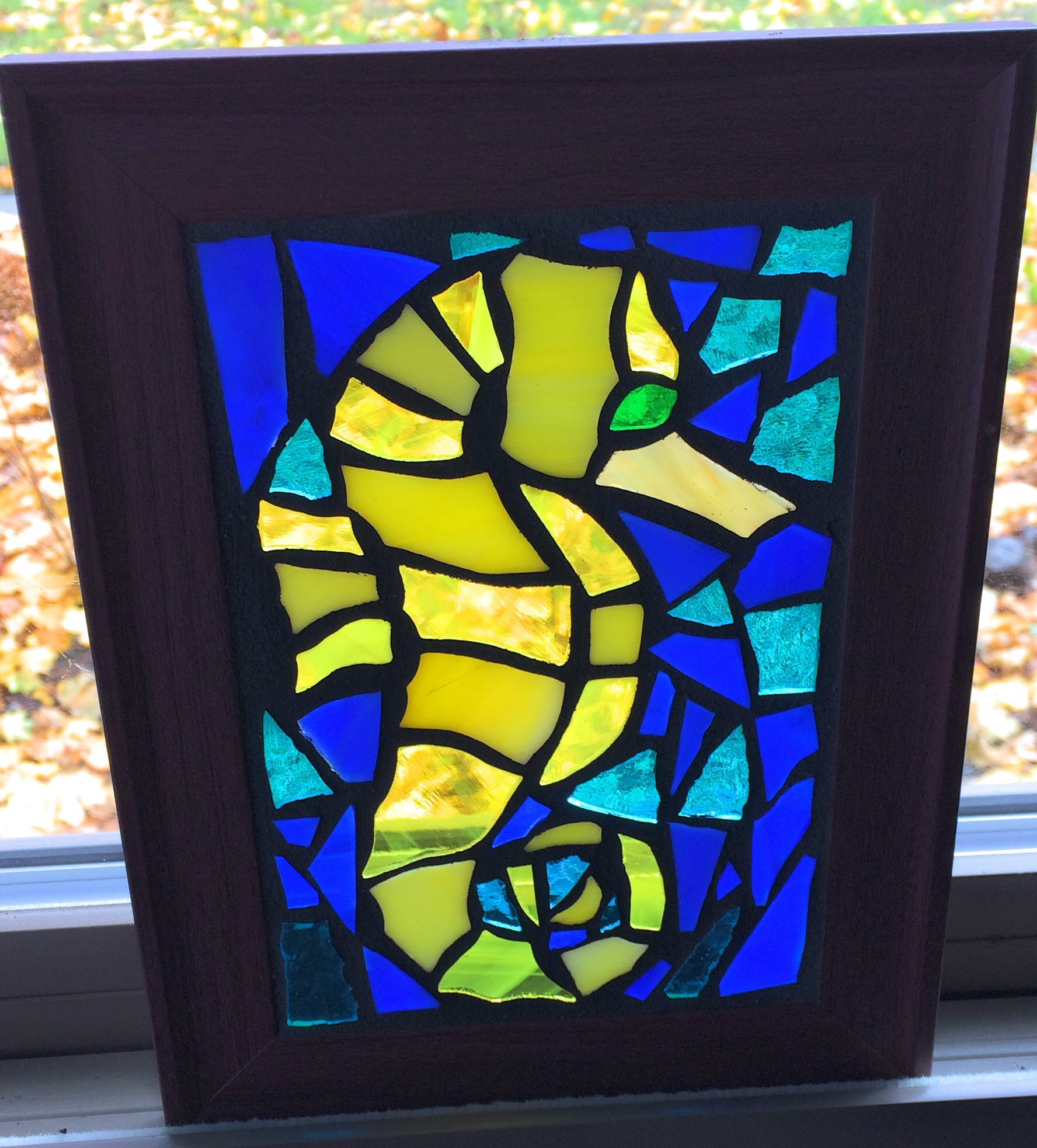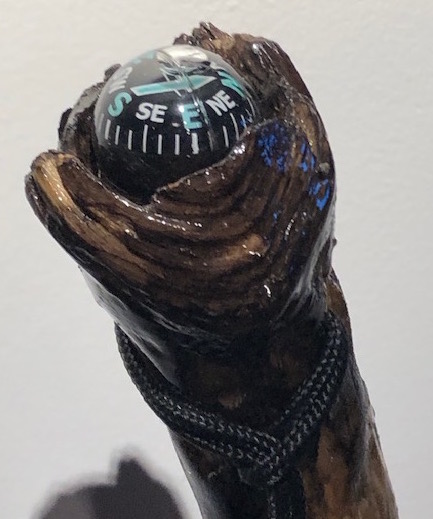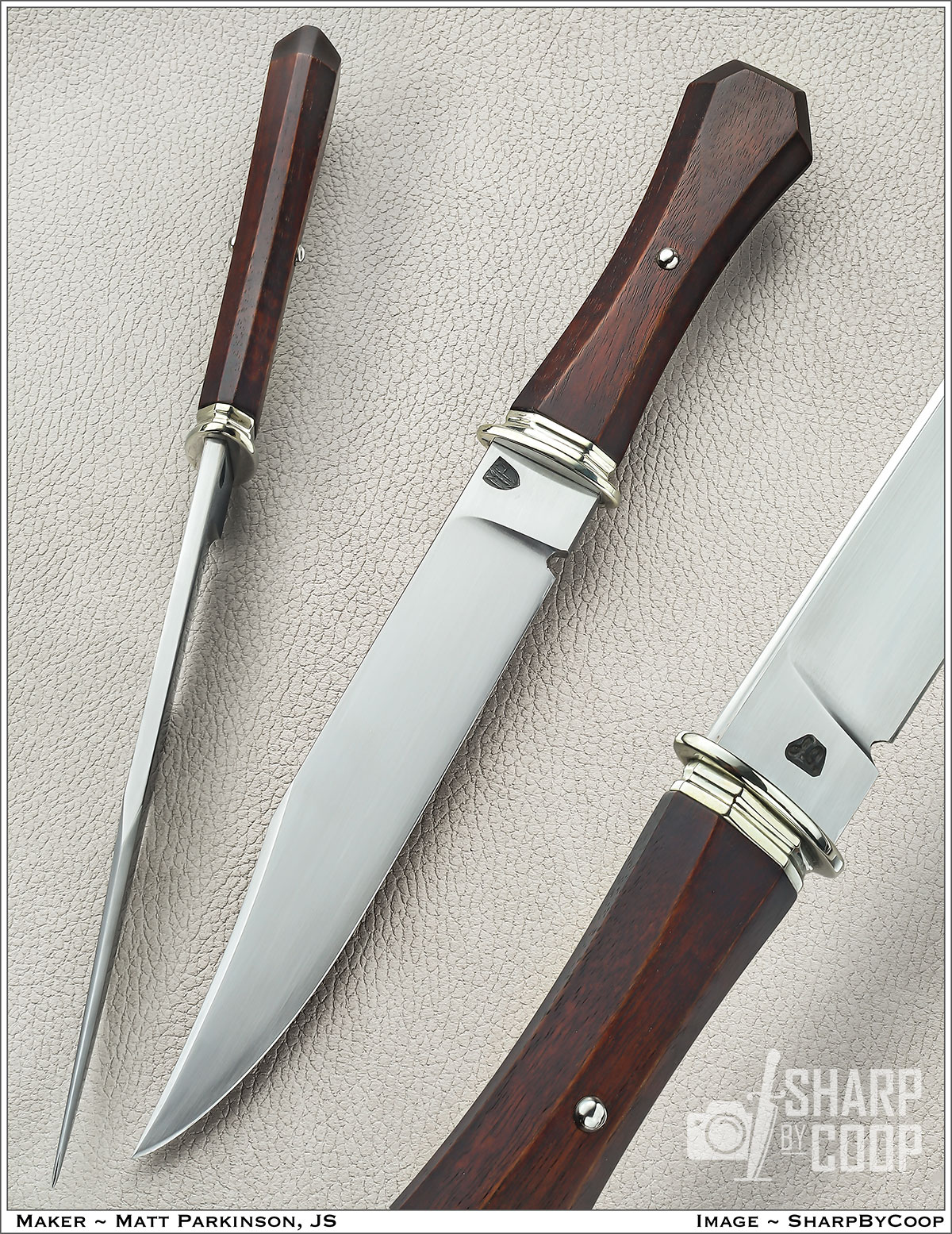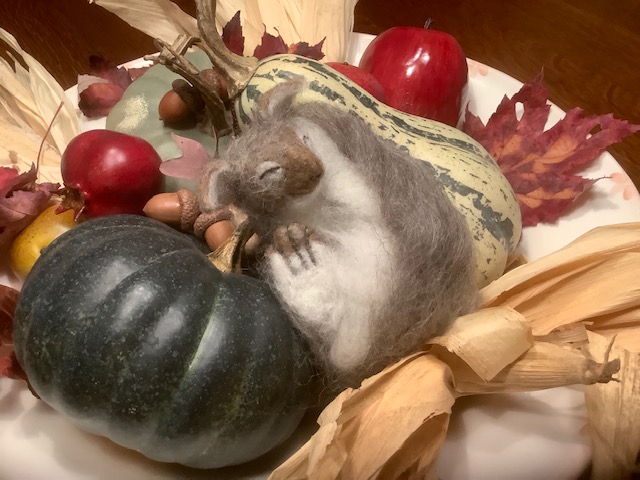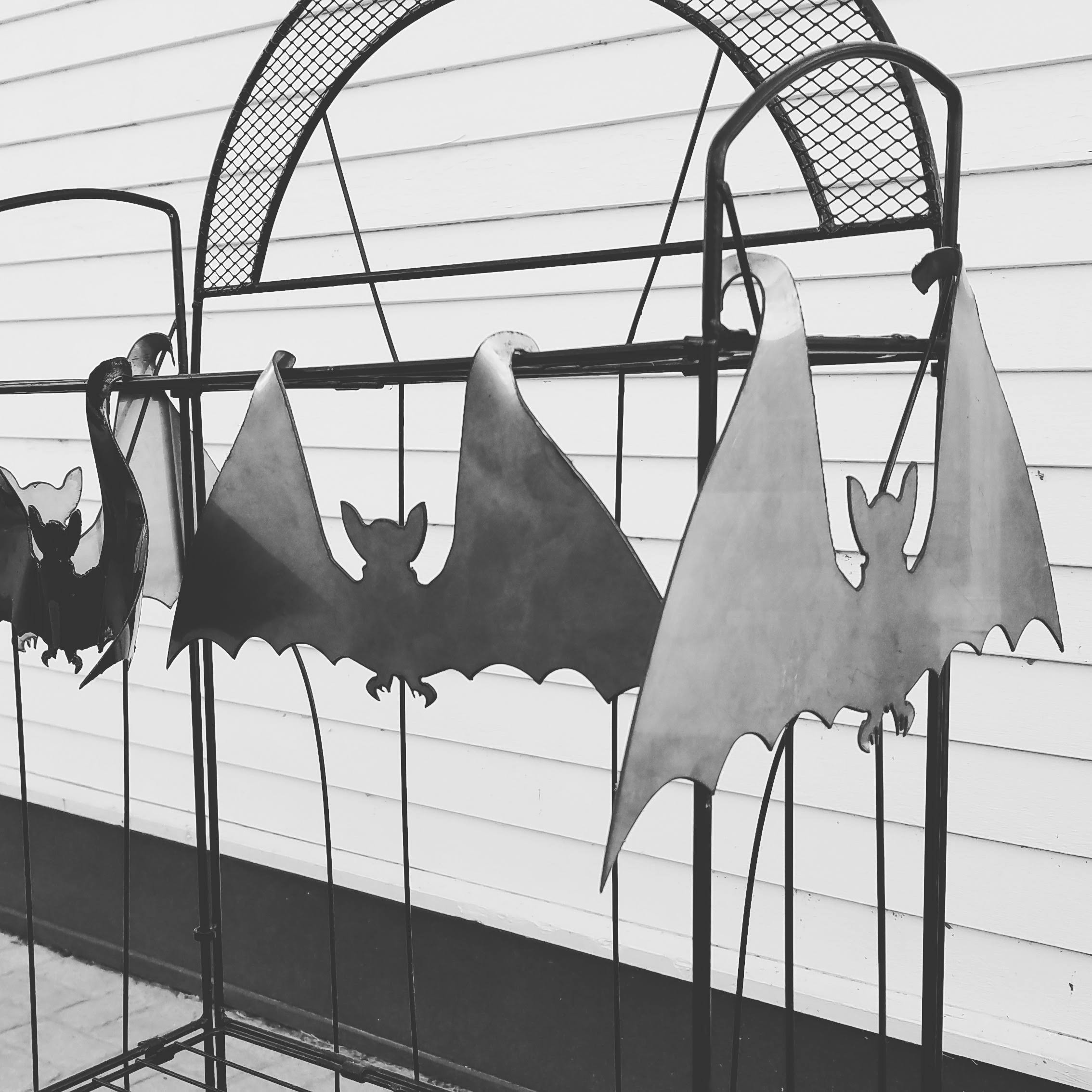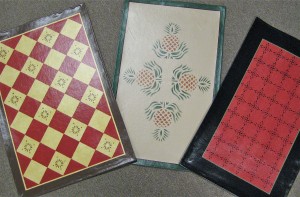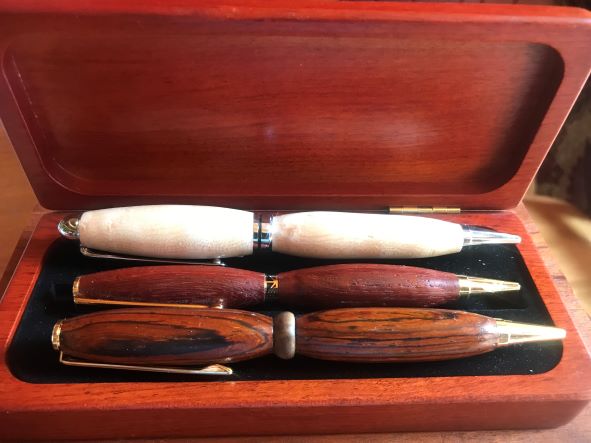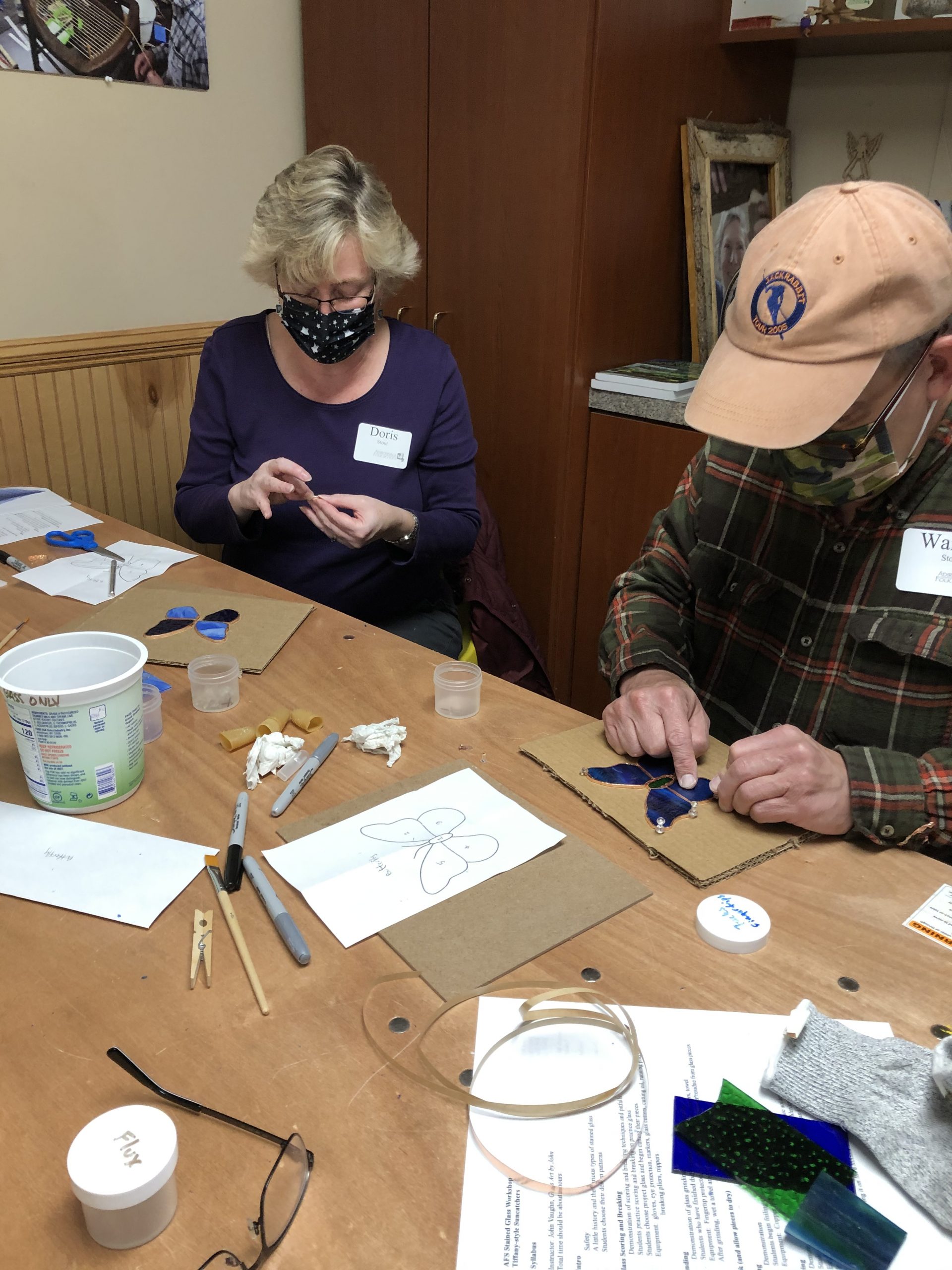- About Us
- Membership
- Calendar
- Courses
- 2025 Catalog
- Registration Policy & Procedure
- Groups
- Scholarship Opportunities
- Courses by Area of Craft
- Basketry
- Blacksmithing
- Boats & Paddles
- Ceramics
- Cooking & Foods
- Crafts for Children and Young People
- Drawing/Painting
- Fiber Arts
- Glass Arts
- Herbalism
- Jewelry
- Metal Arts
- Music
- Nature Studies
- Nature Studies & Outdoor Skills
- Photography
- Rustic Furniture
- Soap Making
- Traditional Crafts
- Woodcarving
- Woodturning
- Woodworking
- Safety Video
- Events & Programs
- Gift Shop
- Support AFS
- Contact Us
Calendar of Events
S Sun
M Mon
T Tue
W Wed
T Thu
F Fri
S Sat
3 events,
Introduction to Cold Process Soap Making
Introduction to Cold Process Soap Making
This class is an introduction to the cold process method of soap making. Students will get a lesson in lye safety and will participate in the making of a basic soap. Students will leave with a loaf of soap that will yield about eight bars. Finally, while this is an introductory class, there will be discussion about ways to acquire further knowledge/skills.
Traditional Soap Making
Traditional Soap Making
Create soap just like Grandma, but better! Join Chrissey for an enjoyable Sunday afternoon as you learn how to make soap that not only smells good but is all-natural and feels great on your skin. This fun class will teach you how to create soap using the cold-process and natural/organic ingredients. You will learn all about the basic process, oils, and the difference between fragrances and essential oils. You will create soap from a recipe while learning how to handle lye safely. Finally, you'll take home your hand-made soap. So, say good-bye to store-bought soap and start using soap you made yourself!
1 event,
Principles of Herbal Medicine
Principles of Herbal Medicine
The use of plants for wellness, nutrition and balance has been practiced for thousands of years in the Adirondacks and cultures around the globe. Join Margo for an exploration of Basic Principles of Herbal Medicine through the lens of intimately getting to know 6 easy to identify plants from our local region who may be growing right under your own feet! (And in your own garden!)
In this class you will have an opportunity to gain intimate knowledge of plants and traditional methods of working with them, while building your wild skill set in identification and transforming raw (plant) material into beneficial preparations through hands-on experiences. Your work in the classroom will continue at home. In each class you will receive a rooted specimen of the plant we work with, along with the earthwork of establishing your own medicinal herb garden.
This class is recommended for those who are: curious, herbalists, gardeners and/or plant lovers, ages 13 and up, beginner or experienced.
0 events,
0 events,
0 events,
0 events,
0 events,
0 events,
0 events,
1 event,
Autumn Weaving – Table Runners
Autumn Weaving – Table Runners
Want to try out weaving on a floor loom? This class starts with a loom all set up and ready to go - no prior weaving experience is needed! Gather round the table with family, food, and a lovely woven (by you!) table runner. Each class will include an introduction to the loom and instructions on how to operate it. Several color choices will be available. You'll be weaving away in no time!
0 events,
3 events,
AFS Sewing Circle
AFS Sewing Circle
Calling all fiber artists! Do you have a project you're in the middle of? Want some company while you work? Sounds like AFS Sewing Circle is the place for you! Quilters, knitters, and fiber artists alike are welcome to join us every month for an afternoon of quilting and camaraderie. Bring your works in progress, and enjoy sharing your experience and the company of your fellow quilters. Pre-registration is not required. All are welcome!
Autumn Weaving – Table Runners
Autumn Weaving – Table Runners
Want to try out weaving on a floor loom? This class starts with a loom all set up and ready to go - no prior weaving experience is needed! Gather round the table with family, food, and a lovely woven (by you!) table runner. Each class will include an introduction to the loom and instructions on how to operate it. Several color choices will be available. You'll be weaving away in no time!
A Taste of the Forge
A Taste of the Forge
Would you like to try blacksmithing, and get a taste of the craft? Join instructor Steve Gurzler for 3 weekday evenings to learn how to operate a coal forge to bring metal to incandescent heat and shape it with hammer in hand. This class will use the Artist Blacksmiths Association of North America (ABANA) curriculum to teach the basics of blacksmithing. Students can expect to create 2 or more projects during the 3 evenings. Class size is limited to ensure all can advance at their own pace.
2 events,
Barn Quilt
Barn Quilt
Barn quilts are all the rage these days! Come and create your own wooden "quilt" to adorn your house, barn or cottage. In this one and a half day class you will choose a pattern and paint a stunning "quilt" to hang outdoors. No quilting experience necessary.
Blacksmithing 101: Nail & Hook
Blacksmithing 101: Nail & Hook
This 4-hour class is ideal for the beginner blacksmith with little to no experience. We will start with the basics, and within the first hour students will be forging their own nails. From there, students will forge hooks with a decorative twist.
6 events,
Introduction to Chip Carving
Introduction to Chip Carving
This course will introduce students to the traditional craft of chip carving - a type of woodcarving in which a small knife is used to incise decorative floral and geometric designs into basswood or butternut. The design is created by the removal of small pieces (chips) of the wood. Chip carving is an ancient, traditional craft. Chip carved plates, jewelry and keepsake boxes, trays, breadboards, furniture and other items can make wonderful gifts and also decorate the home with traditional motifs. Some previous carving experience is helpful, but not necessary. Students will learn to carve a variety of practice designs already drawn on a board and may complete a round ornament as well.
Blacksmithing 102C: Make Like a Tree
Blacksmithing 102C: Make Like a Tree
Nature has been a source of artistic inspiration for thousands of years. Leaves have been a part of decorative blacksmithing for a long time, and there are many different types of leaves one can make. This class is intended for students who have taken a basic/beginner class and who understand the basic techniques and concepts. We will start by making leaves with just the hammer and anvil, and then begin using tools like chisels and decorative punches.
Needle Felted Fall Decor
Needle Felted Fall Decor
Needle felting is a fun and addictive craft. The wool is very forgiving as it can be continually reshaped, similar to sculpting with clay. In this introductory class, we will discuss the variety of wools, tools, and techniques used to form desired shapes in creating three-dimensional objects. Students will sculpt two medium sized pumpkins or gourds, with techniques that can be transferred to unlimited ideas. Each student's work will be different as we work with a number of choices of type of fleece and colors used. Additional kits and tools will be available for purchase.
Woodturned Lidded Boxes
Woodturned Lidded Boxes
In this class, students will learn to turn a cylindrical box and then turn a lid for the box, all from the same piece of wood. Students will learn tricks to making a good lid and will leave the class with a nice box for all sorts of collections!
Barn Quilt
Barn Quilt
Barn quilts are all the rage these days! Come and create your own wooden "quilt" to adorn your house, barn or cottage. In this one and a half day class you will choose a pattern and paint a stunning "quilt" to hang outdoors. No quilting experience necessary.
Autumn Leaves: Intro to Working with Copper
Autumn Leaves: Intro to Working with Copper
Copper is a very different material from iron and is capable of being finished in beautiful ways. This class will cover the basics of non-ferrous forging, including annealing and work hardening, as well as finishes and patinas. Students will start with a bar of copper that will be worked hot and cold to form a maple leaf. Then the instructor will share an ancient and closely guarded secret technique, which gives the leaves a red and gold finish.
5 events,
Introduction to Chip Carving
Introduction to Chip Carving
This course will introduce students to the traditional craft of chip carving - a type of woodcarving in which a small knife is used to incise decorative floral and geometric designs into basswood or butternut. The design is created by the removal of small pieces (chips) of the wood. Chip carving is an ancient, traditional craft. Chip carved plates, jewelry and keepsake boxes, trays, breadboards, furniture and other items can make wonderful gifts and also decorate the home with traditional motifs. Some previous carving experience is helpful, but not necessary. Students will learn to carve a variety of practice designs already drawn on a board and may complete a round ornament as well.
Blacksmithing 103: Coat Rack
Blacksmithing 103: Coat Rack
This final intro to blacksmithing class uses all of the forging techniques taught in the previous classes to create a small coat or pot rack, with hand forged hooks riveted to the base. This is also an introduction o joinery, as students will learn how to rivet pieces together. Other techniques including pass-throughs and mortise and tenon will be demonstrated and discussed.
Needle Felted Fall Decor
Needle Felted Fall Decor
Needle felting is a fun and addictive craft. The wool is very forgiving as it can be continually reshaped, similar to sculpting with clay. In this introductory class, we will discuss the variety of wools, tools, and techniques used to form desired shapes in creating three-dimensional objects. Students will sculpt two medium sized pumpkins or gourds, with techniques that can be transferred to unlimited ideas. Each student's work will be different as we work with a number of choices of type of fleece and colors used. Additional kits and tools will be available for purchase.
Scroll Saw Puzzle Making
Scroll Saw Puzzle Making
Wooden puzzles are a great project whether you are a beginner or experienced woodworker. In this class students will learn the basics of the safe operation of a scroll saw, proper blade selection and installation, pattern transfer, proper cutting techniques and proper body positioning at the saw table. Each student will progress from learning to make moderate curves to tight curves using the scroll saw by producing, first, a wood maple leaf and progressing through more difficult patterns to a final puzzle which will require attention to detail and care in cutting. Come learn the secret tricks to ensure your puzzle is a success. It can make the perfect gift, too.
Rugs from Rags
Rugs from Rags
No weaving experience is necessary! The looms are dressed and ready to go, all you need to do is bring your creative spirit and to leave with a finished one-of-a-kind rug. Students will have a choice of making a traditional Rag Rug using recycled fabric strips or making a Sock Rug using remnants from a sock factory. Colors and choices of fabric and remnants vary from class to class depending on availability. The rugs are 24" wide, and up to 45" long.
1 event,
Build a Wee Lassie Canoe
Build a Wee Lassie Canoe
The original Wee Lassie was a lapstrake-built open cedar canoe made in 1863 by J. Henry Rushton of Canton, NY. Rushton was one of the most famous canoe builders of his era. George Washington Sears, who wrote of his adventures under his pen name of Nessmuk as he recorded his paddling adventures throughout the Adirondacks, popularized these small, finely crafted canoes. Come spend 11 wonderful days with master instructor Larry Benjamin building your own Wee Lassie. You will be guided through every step of the building process. Leave with a beautiful, lightweight canoe that handles well in the water. Open to all level of student.
1 event,
Build a Wee Lassie Canoe
Build a Wee Lassie Canoe
The original Wee Lassie was a lapstrake-built open cedar canoe made in 1863 by J. Henry Rushton of Canton, NY. Rushton was one of the most famous canoe builders of his era. George Washington Sears, who wrote of his adventures under his pen name of Nessmuk as he recorded his paddling adventures throughout the Adirondacks, popularized these small, finely crafted canoes. Come spend 11 wonderful days with master instructor Larry Benjamin building your own Wee Lassie. You will be guided through every step of the building process. Leave with a beautiful, lightweight canoe that handles well in the water. Open to all level of student.
1 event,
Build a Wee Lassie Canoe
Build a Wee Lassie Canoe
The original Wee Lassie was a lapstrake-built open cedar canoe made in 1863 by J. Henry Rushton of Canton, NY. Rushton was one of the most famous canoe builders of his era. George Washington Sears, who wrote of his adventures under his pen name of Nessmuk as he recorded his paddling adventures throughout the Adirondacks, popularized these small, finely crafted canoes. Come spend 11 wonderful days with master instructor Larry Benjamin building your own Wee Lassie. You will be guided through every step of the building process. Leave with a beautiful, lightweight canoe that handles well in the water. Open to all level of student.
4 events,
Build a Wee Lassie Canoe
Build a Wee Lassie Canoe
The original Wee Lassie was a lapstrake-built open cedar canoe made in 1863 by J. Henry Rushton of Canton, NY. Rushton was one of the most famous canoe builders of his era. George Washington Sears, who wrote of his adventures under his pen name of Nessmuk as he recorded his paddling adventures throughout the Adirondacks, popularized these small, finely crafted canoes. Come spend 11 wonderful days with master instructor Larry Benjamin building your own Wee Lassie. You will be guided through every step of the building process. Leave with a beautiful, lightweight canoe that handles well in the water. Open to all level of student.
Small Copper Embossing
Small Copper Embossing
Learn the discipline of Metal Working known as Embossing. Students will transfer an image of their choosing from a paper template to a sheet of copper by using various sizes of stylus and other hand tools to create a textured picture. Students will find that copper is a very workable material. Your finished piece will fit in with any Adirondack decor or even in a rustic birch frame! This piece is 6" x 6".
Learn How to Create Dry-Laid Stone Walls
Learn How to Create Dry-Laid Stone Walls
If you've ever admired the beautiful stone walls you've seen in the countryside and wondered how they were made, this class is for you! In this two-day class you will learn the basic techniques for creating dry-laid stone walls from an accomplished stone mason. Both retaining and freestanding walls will be covered, along with preparing the base and sub-base, stone selection and other topics. This hands-on workshop is a must for anyone who wants to build or repair stone walls for their own home.
A Taste of the Forge
A Taste of the Forge
Would you like to try blacksmithing, and get a taste of the craft? Join instructor Steve Gurzler for 3 weekday evenings to learn how to operate a coal forge to bring metal to incandescent heat and shape it with hammer in hand. This class will use the Artist Blacksmiths Association of North America (ABANA) curriculum to teach the basics of blacksmithing. Students can expect to create 2 or more projects during the 3 evenings. Class size is limited to ensure all can advance at their own pace.
5 events,
Build a Wee Lassie Canoe
Build a Wee Lassie Canoe
The original Wee Lassie was a lapstrake-built open cedar canoe made in 1863 by J. Henry Rushton of Canton, NY. Rushton was one of the most famous canoe builders of his era. George Washington Sears, who wrote of his adventures under his pen name of Nessmuk as he recorded his paddling adventures throughout the Adirondacks, popularized these small, finely crafted canoes. Come spend 11 wonderful days with master instructor Larry Benjamin building your own Wee Lassie. You will be guided through every step of the building process. Leave with a beautiful, lightweight canoe that handles well in the water. Open to all level of student.
Copper Bowl
Copper Bowl
In this class students will create a beautiful copper bowl from a 12" x 12" sheet of 16-gauge copper. Students will pound and hand tool the sheet into an 9" diameter, approx. 2" deep bowl. Students will also make a decorative vine with leaves from copper that will be attached to the rim of the bowl. Some soldering will be involved in this
Copper Bowl
Copper Bowl
In this class students will create a beautiful copper bowl from a 12" x 12" sheet of 16 gauge copper. Students will pound and hand tool the sheet into an 8" diameter, approx. 2" deep bowl. Students will also make a decorative vine with leaves from copper that will be attached to the rim of the bowl. Some soldering will be involved in this class.
Complete Basic Blacksmithing
Complete Basic Blacksmithing
This basic class will give you the foundation needed to start out on your journey of blacksmithing. You'll learn fire management, hammering methods, drawing out, upsetting, cutting, splitting, twisting, and convenience bending along with a demo of forge welding. Make punches and chisels and learn to harden and temper them. Heating material and heat management will be taught and much more.
Learn How to Create Dry-Laid Stone Walls
Learn How to Create Dry-Laid Stone Walls
If you've ever admired the beautiful stone walls you've seen in the countryside and wondered how they were made, this class is for you! In this two-day class you will learn the basic techniques for creating dry-laid stone walls from an accomplished stone mason. Both retaining and freestanding walls will be covered, along with preparing the base and sub-base, stone selection and other topics. This hands-on workshop is a must for anyone who wants to build or repair stone walls for their own home.
5 events,
Build a Wee Lassie Canoe
Build a Wee Lassie Canoe
The original Wee Lassie was a lapstrake-built open cedar canoe made in 1863 by J. Henry Rushton of Canton, NY. Rushton was one of the most famous canoe builders of his era. George Washington Sears, who wrote of his adventures under his pen name of Nessmuk as he recorded his paddling adventures throughout the Adirondacks, popularized these small, finely crafted canoes. Come spend 11 wonderful days with master instructor Larry Benjamin building your own Wee Lassie. You will be guided through every step of the building process. Leave with a beautiful, lightweight canoe that handles well in the water. Open to all level of student.
Complete Basic Blacksmithing
Complete Basic Blacksmithing
This basic class will give you the foundation needed to start out on your journey of blacksmithing. You'll learn fire management, hammering methods, drawing out, upsetting, cutting, splitting, twisting, and convenience bending along with a demo of forge welding. Make punches and chisels and learn to harden and temper them. Heating material and heat management will be taught and much more.
Build a Rustic Birdhouse
Build a Rustic Birdhouse
Anyone can learn to make a rustic birdhouse in just a few hours. A birdhouse is a simple structure with seven basic parts: two sides, a front and back, a bottom, and two pieces for the top. Power tools are not necessary to cut the wood; it can be done with a handsaw. Using rough-cut lumber, you will construct a rustic birdhouse that can be functional and/or decorative. Choose from several birdhouse designs. There will be a short discussion about nesting birds, feeding birds and suitable houses for area birds. Participants are encouraged to bring objects (such as old drawer pulls, doorknobs, hardware, etc.) from home. Adults and teens welcome; children ages 10-14 must be accompanied by an adult.
Framed Stained Glass Mosaics
Framed Stained Glass Mosaics
In this class students will create a stained glass mosaic in an 8 x 10 frame. Students will have a choice of photographs to work with, or may bring their own if desired. Students will be instructed on how to grout their piece, which is recommended but not required. This class is suitable for students of any level.
The Art of Cheesemaking: 102
The Art of Cheesemaking: 102
Internationally known cheesemakers Sheila Flanagan and Sal Speights return for this second course in the Art of Cheesemaking. This time they will talk about the methods for making mixed milk cheeses and the art of washed rind and hard natural cheeses. The first half of the class will discuss: differences between cow, goat and sheep milk and how the different compositions of those milks change the quality of the cheese, seasonality and adjustments to starter cultures and rennet to accommodate the amount of each milk that is available, financial/business considerations in producing mixed milk cheeses, the vast variety of washed and hard natural cheeses - finding your niche. The second half of this course will provide time to put your knowledge to work by making a mixed milk cheese. Sheila and Sal will provide tips on how to care for your mixed milk cheese at home and tips to try to convert your mixed milk cheese into a washed rind cheese.
3 events,
Hiking Stick
Hiking Stick
Learn how to make your very own personal hiking stick. Begin by selecting the perfect stick collected by the instructor. Then you will learn how to shave and carve your hiking stick. Once you are happy with your creation, the sticks will be completed by drilling a hole in them and adding a lanyard. Once finished, put your stick to good use on the trail running right by our school!
Complete Basic Blacksmithing
Complete Basic Blacksmithing
This basic class will give you the foundation needed to start out on your journey of blacksmithing. You'll learn fire management, hammering methods, drawing out, upsetting, cutting, splitting, twisting, and convenience bending along with a demo of forge welding. Make punches and chisels and learn to harden and temper them. Heating material and heat management will be taught and much more.
Fermented Foods
Fermented Foods
The process of lactic-acid fermentation increases vitamins, enzymes and beneficial bacteria naturally present in good whole, fermented and culturally traditional foods. Roberta is hoping to inspire you to include all of this in all diets as a way to introduce healthier options for optimal digestive functioning. In this good for your gut class, you will learn how to make kombucha, kefir, sourdough starter (for bread baking), cultured butter and sauerkraut.
2 events,
Build a Wee Lassie Canoe
Build a Wee Lassie Canoe
The original Wee Lassie was a lapstrake-built open cedar canoe made in 1863 by J. Henry Rushton of Canton, NY. Rushton was one of the most famous canoe builders of his era. George Washington Sears, who wrote of his adventures under his pen name of Nessmuk as he recorded his paddling adventures throughout the Adirondacks, popularized these small, finely crafted canoes. Come spend 11 wonderful days with master instructor Larry Benjamin building your own Wee Lassie. You will be guided through every step of the building process. Leave with a beautiful, lightweight canoe that handles well in the water. Open to all level of student.
Complete Basic Blacksmithing
Complete Basic Blacksmithing
This basic class will give you the foundation needed to start out on your journey of blacksmithing. You'll learn fire management, hammering methods, drawing out, upsetting, cutting, splitting, twisting, and convenience bending along with a demo of forge welding. Make punches and chisels and learn to harden and temper them. Heating material and heat management will be taught and much more.
1 event,
Build a Wee Lassie Canoe
Build a Wee Lassie Canoe
The original Wee Lassie was a lapstrake-built open cedar canoe made in 1863 by J. Henry Rushton of Canton, NY. Rushton was one of the most famous canoe builders of his era. George Washington Sears, who wrote of his adventures under his pen name of Nessmuk as he recorded his paddling adventures throughout the Adirondacks, popularized these small, finely crafted canoes. Come spend 11 wonderful days with master instructor Larry Benjamin building your own Wee Lassie. You will be guided through every step of the building process. Leave with a beautiful, lightweight canoe that handles well in the water. Open to all level of student.
2 events,
Build a Wee Lassie Canoe
Build a Wee Lassie Canoe
The original Wee Lassie was a lapstrake-built open cedar canoe made in 1863 by J. Henry Rushton of Canton, NY. Rushton was one of the most famous canoe builders of his era. George Washington Sears, who wrote of his adventures under his pen name of Nessmuk as he recorded his paddling adventures throughout the Adirondacks, popularized these small, finely crafted canoes. Come spend 11 wonderful days with master instructor Larry Benjamin building your own Wee Lassie. You will be guided through every step of the building process. Leave with a beautiful, lightweight canoe that handles well in the water. Open to all level of student.
Open Forge Night
Open Forge Night
Interested in blacksmithing but unsure how to start? Open Forge Night is the place for you! Every third Wednesday of the month during our blacksmithing season, come see demonstrations by expert blacksmith Steve Gurzler. Observing the demonstration is free and open to the public. If you want to try your hand at blacksmithing there is a $20 fee to cover the cost of materials. Safety precautions must be followed - including hard shoes with no open toes, long pants, goggles (supplied) and gloves (supplied).
2 events,
Build a Wee Lassie Canoe
Build a Wee Lassie Canoe
The original Wee Lassie was a lapstrake-built open cedar canoe made in 1863 by J. Henry Rushton of Canton, NY. Rushton was one of the most famous canoe builders of his era. George Washington Sears, who wrote of his adventures under his pen name of Nessmuk as he recorded his paddling adventures throughout the Adirondacks, popularized these small, finely crafted canoes. Come spend 11 wonderful days with master instructor Larry Benjamin building your own Wee Lassie. You will be guided through every step of the building process. Leave with a beautiful, lightweight canoe that handles well in the water. Open to all level of student.
A Taste of the Forge
A Taste of the Forge
Would you like to try blacksmithing, and get a taste of the craft? Join instructor Steve Gurzler for 3 weekday evenings to learn how to operate a coal forge to bring metal to incandescent heat and shape it with hammer in hand. This class will use the Artist Blacksmiths Association of North America (ABANA) curriculum to teach the basics of blacksmithing. Students can expect to create 2 or more projects during the 3 evenings. Class size is limited to ensure all can advance at their own pace.
4 events,
Build a Wee Lassie Canoe
Build a Wee Lassie Canoe
The original Wee Lassie was a lapstrake-built open cedar canoe made in 1863 by J. Henry Rushton of Canton, NY. Rushton was one of the most famous canoe builders of his era. George Washington Sears, who wrote of his adventures under his pen name of Nessmuk as he recorded his paddling adventures throughout the Adirondacks, popularized these small, finely crafted canoes. Come spend 11 wonderful days with master instructor Larry Benjamin building your own Wee Lassie. You will be guided through every step of the building process. Leave with a beautiful, lightweight canoe that handles well in the water. Open to all level of student.
Walking Stick with Inlaid Compass
Walking Stick with Inlaid Compass
Take your next hike or walk around the corner with a unique hand-crafted walking stick. Frank will guide you through the process of taking a piece of ironwood and transforming it into a walking stick that will last a lifetime. The inlaid compass will help ensure you don't lose your way on the trail! Makes a wonderful gift for the hikers in your life!
Coffin Handled Bowie Knife
Coffin Handled Bowie Knife
The Bowie Knife conjures thoughts of legend and history. In this class students will create their own version of this iconic American knife. Students will begin by forging the blades to shape from high carbon steel bar stock, followed by grinding and heat treating the blade. Once the blades are finished the class will turn to the handles fabricating a guard, bolster and wood handle for their knives.
This class will focus on several key techniques in knifemaking: fitting a guard, as well as shaping and designing hidden tang wooden handles.
Eco Print Silk Scarf
Eco Print Silk Scarf
Join Marjolaine in a 1-day class to create an eco print silk scarf. During this workshop you will explore the technique of eco printing, a method of transferring the pigment within leaves and other plant matter to silk fabric via steaming or boiling. It is a technique for printing on fabric with the natural dye color present in plants.
3 events,
Relief Carved Door Toppers
Relief Carved Door Toppers
Carve a decorative door topper for your interior or exterior door. Learn to design, lay out, and carve, a scenic design or welcome sign for the top of your door.
Coffin Handled Bowie Knife
Coffin Handled Bowie Knife
The Bowie Knife conjures thoughts of legend and history. In this class students will create their own version of this iconic American knife. Students will begin by forging the blades to shape from high carbon steel bar stock, followed by grinding and heat treating the blade. Once the blades are finished the class will turn to the handles fabricating a guard, bolster and wood handle for their knives.
This class will focus on several key techniques in knifemaking: fitting a guard, as well as shaping and designing hidden tang wooden handles.
Felted Squirrel
Felted Squirrel
Felt a "sleepy squirrel" that could be found in a leafy nest anywhere in the Adirondacks. You will use a simple armiture, natural wool fibers, and easy to use techniques to create a lifelike image of a sleeping gray squirrel. This course is appropriate for beginners and will give you the skills to create your own sleepy character.
3 events,
Relief Carved Door Toppers
Relief Carved Door Toppers
Carve a decorative door topper for your interior or exterior door. Learn to design, lay out, and carve, a scenic design or welcome sign for the top of your door.
Coffin Handled Bowie Knife
Coffin Handled Bowie Knife
The Bowie Knife conjures thoughts of legend and history. In this class students will create their own version of this iconic American knife. Students will begin by forging the blades to shape from high carbon steel bar stock, followed by grinding and heat treating the blade. Once the blades are finished the class will turn to the handles fabricating a guard, bolster and wood handle for their knives.
This class will focus on several key techniques in knifemaking: fitting a guard, as well as shaping and designing hidden tang wooden handles.
Principles of Herbal Medicine
Principles of Herbal Medicine
The use of plants for wellness, nutrition and balance has been practiced for thousands of years in the Adirondacks and cultures around the globe. Join Margo for an exploration of Basic Principles of Herbal Medicine through the lens of intimately getting to know 6 easy to identify plants from our local region who may be growing right under your own feet! (And in your own garden!)
In this class you will have an opportunity to gain intimate knowledge of plants and traditional methods of working with them, while building your wild skill set in identification and transforming raw (plant) material into beneficial preparations through hands-on experiences. Your work in the classroom will continue at home. In each class you will receive a rooted specimen of the plant we work with, along with the earthwork of establishing your own medicinal herb garden.
This class is recommended for those who are: curious, herbalists, gardeners and/or plant lovers, ages 13 and up, beginner or experienced.
0 events,
0 events,
0 events,
1 event,
Intro to Sheet Metal – Halloween Bat
Intro to Sheet Metal – Halloween Bat
Students will start with a mild steel cutout of a Halloween bat, which they can decorate using punches, chisels and other hot and cold techniques. Then, students will learn how to bend and curve sheets of metal. The final result is a 3-D hand forged decoration, perfect for Halloween.
5 events,
Japanese Dagger with Sawa (Sheath & Handle)
Japanese Dagger with Sawa (Sheath & Handle)
The goal of this class is to produce a blade ready for quenching with minimal use of a grinder. The focus will be on the tanto, the dagger carried by samurai. Students will start with a piece of high carbon stock. This class will follow historic processes as closely as possible. Students will forge their bar into a blank of precise dimensions, before hand forging bevels and relevant blade geometry. Then, hand files will be used to finish the blade. Blades that are ready will be quenched at the end of the 2nd day. This class includes an in depth discussion of heat treating, and blades will be clay coated when quenched for a hamon. The third day will start at the forge to make a basic fitting, the habaki, from copper. After that, the class will turn to the wood shop, where students will use hand tools to make a wooden handle and sheath using traditional methods. This class is for intermediate smiths.
Stenciled Floorcloth
Stenciled Floorcloth
Create your own floorcloth in either a traditional pattern or Arts & Crafts style using environmentally-safe water-based paints and finishes. The use of painted canvas floor coverings, also known as oil cloths, dates as far back as the 14th century in Europe. People coming to this country were looking for ways to reproduce some of the furnishings they were used to back home. Since resources were limited, worn sails from ships provided them with a base to paint and cover their floors. Over time floorcloths proved themselves to be one of the most durable forms of floor covering used. Centuries old pieces still remain intact with the pattern clearly visible. Come create your own artful and durable floorcloth that will last for generations.
Introductory Woodturning
Introductory Woodturning
This course is for people who have an interest in learning how to turn. The emphasis will be on learning how to use the lathe and tools safely and correctly. In this class you will learn the basics of creating spindle-based objects. Then you will use your new-found skills to create a candlestick and a wooden pen. You'll need to take this class before moving on to the more advanced turning classes.
Stained Glass for Beginners
Stained Glass for Beginners
In this workshop we will complete a small Tiffany style suncatcher, ornament, or flower. Students will be able to choose a pre-drawn pattern from a variety of designs and be guided as they learn to cut the glass (chosen from a variety of types and colors), smooth the glass pieces with a grinder, apply copper foil tape, solder the pieces together into the final piece using lead-free solder, and add jump rings or a copper wire stem. The patterns available will offer a variety of levels of difficulty so students may choose what best suits them.
Weaving 102: Next Steps to Weaving on a Floor Loom
Weaving 102: Next Steps to Weaving on a Floor Loom
Once you've learned the basics of the weaving process, it's time for your first project! Each student will wind a warp, dress a loom and weave a Tencel scarf. Multiple color choices will be available. The weave structors is based on plain weave, making this s great first project.
4 events,
Japanese Dagger with Sawa (Sheath & Handle)
Japanese Dagger with Sawa (Sheath & Handle)
The goal of this class is to produce a blade ready for quenching with minimal use of a grinder. The focus will be on the tanto, the dagger carried by samurai. Students will start with a piece of high carbon stock. This class will follow historic processes as closely as possible. Students will forge their bar into a blank of precise dimensions, before hand forging bevels and relevant blade geometry. Then, hand files will be used to finish the blade. Blades that are ready will be quenched at the end of the 2nd day. This class includes an in depth discussion of heat treating, and blades will be clay coated when quenched for a hamon. The third day will start at the forge to make a basic fitting, the habaki, from copper. After that, the class will turn to the wood shop, where students will use hand tools to make a wooden handle and sheath using traditional methods. This class is for intermediate smiths.
Stenciled Floorcloth
Stenciled Floorcloth
Create your own floorcloth in either a traditional pattern or Arts & Crafts style using environmentally-safe water-based paints and finishes. The use of painted canvas floor coverings, also known as oil cloths, dates as far back as the 14th century in Europe. People coming to this country were looking for ways to reproduce some of the furnishings they were used to back home. Since resources were limited, worn sails from ships provided them with a base to paint and cover their floors. Over time floorcloths proved themselves to be one of the most durable forms of floor covering used. Centuries old pieces still remain intact with the pattern clearly visible. Come create your own artful and durable floorcloth that will last for generations.
Chip Carving a Green Man
Chip Carving a Green Man
The Green Man is an ancient symbol of the union of man and nature; a human face is surrounded by floral forms. Each student will receive a basswood plank with the bark on one edge and, separately, a few Green Man designs. After selecting the design of choice, the student will apply the design to the plank and carve the face into the wood.
Weaving 102: Next Steps to Weaving on a Floor Loom
Weaving 102: Next Steps to Weaving on a Floor Loom
Once you've learned the basics of the weaving process, it's time for your first project! Each student will wind a warp, dress a loom and weave a Tencel scarf. Multiple color choices will be available. The weave structors is based on plain weave, making this s great first project.
- There are no events on this day.
- There are no events on this day.
- There are no events on this day.
- There are no events on this day.
- There are no events on this day.
- There are no events on this day.
- There are no events on this day.
- There are no events on this day.
- There are no events on this day.
- There are no events on this day.
- There are no events on this day.


